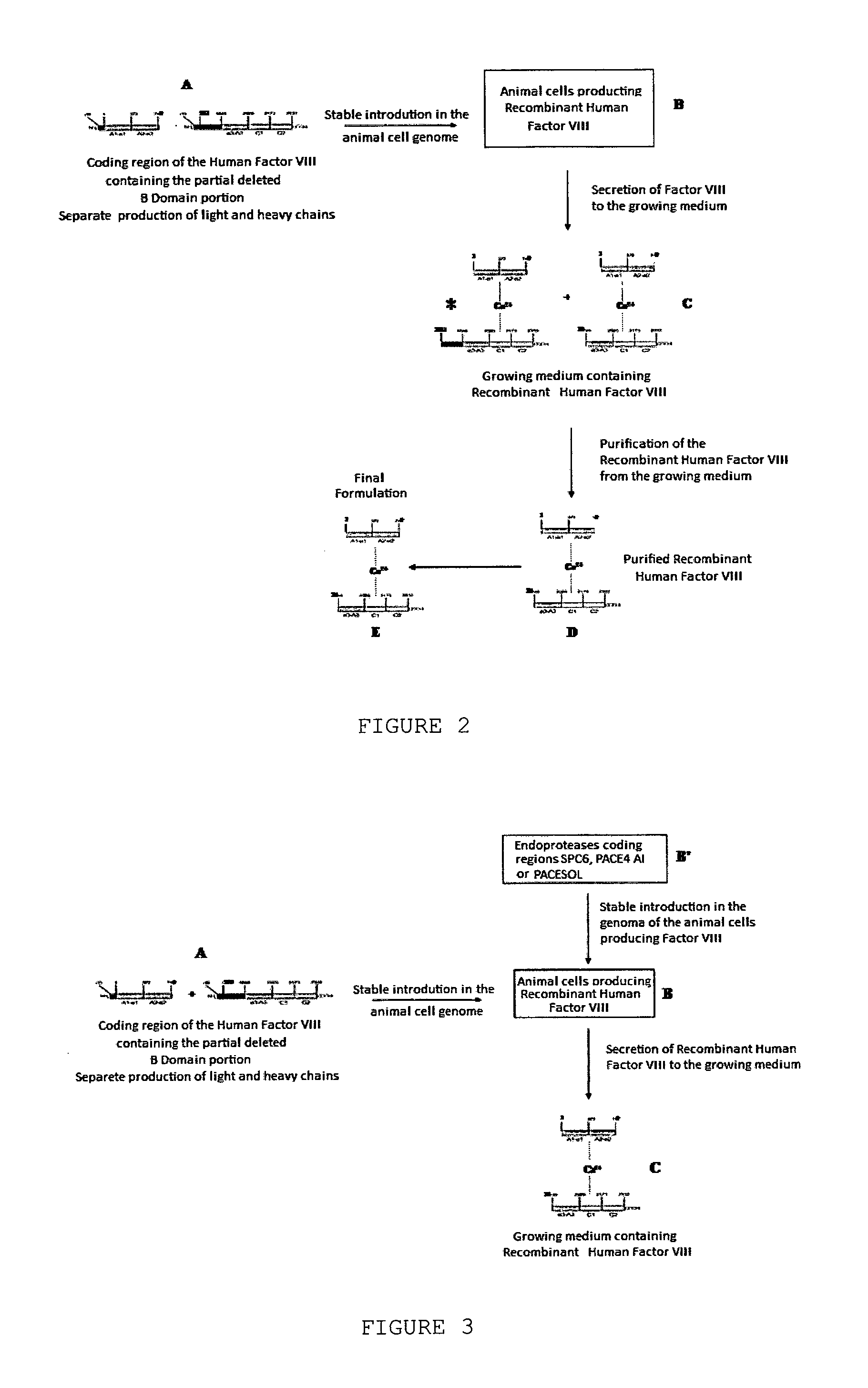Method for the production of recombinant human factor viii
a human factor and recombinant technology, applied in the field of recombinant human factor viii production, can solve the problems of large scale contamination of the hemophilic population, low concentration of factor viii as present in the plasma, and reduced quantity of donators, so as to improve the efficiency of proteolytic processing, correct and efficient fold, and increase the effect of activity
- Summary
- Abstract
- Description
- Claims
- Application Information
AI Technical Summary
Benefits of technology
Problems solved by technology
Method used
Image
Examples
Embodiment Construction
Enzyme Selection
[0084]Six enzymes have been tested, PACE (or furin, abbreviated FUR in the results as presented herein), PACESOL, a new isoform of PACE4 still not characterized (abbreviated as PACE4 in the results as presented herein) having the main domains responsible for PACE4 proteolytic activity, isoform a of PACE4 (abbreviated as PACE4 AI in the results as presented herein), SPC6 and PCSK7, but only SPC6, PACE4 AI and PACESOL show appropriate results, as shown by the examples below.
Production Method
[0085]The method started from growing animal cells producing recombinant human Factor VIII in large quantities. To obtain such cells, coding regions corresponding to the heavy chain of Factor VIII (amino acid residues 1 to 740, preceded by 19 amino acid residues corresponding to the signal peptide of Factor VIII) and the light chain containing a small path corresponding to domain B of Factor VIII (residues 1,563 to 2,332, preceded by 19 amino acid residues corresponding to the signa...
PUM
 Login to View More
Login to View More Abstract
Description
Claims
Application Information
 Login to View More
Login to View More - R&D
- Intellectual Property
- Life Sciences
- Materials
- Tech Scout
- Unparalleled Data Quality
- Higher Quality Content
- 60% Fewer Hallucinations
Browse by: Latest US Patents, China's latest patents, Technical Efficacy Thesaurus, Application Domain, Technology Topic, Popular Technical Reports.
© 2025 PatSnap. All rights reserved.Legal|Privacy policy|Modern Slavery Act Transparency Statement|Sitemap|About US| Contact US: help@patsnap.com



